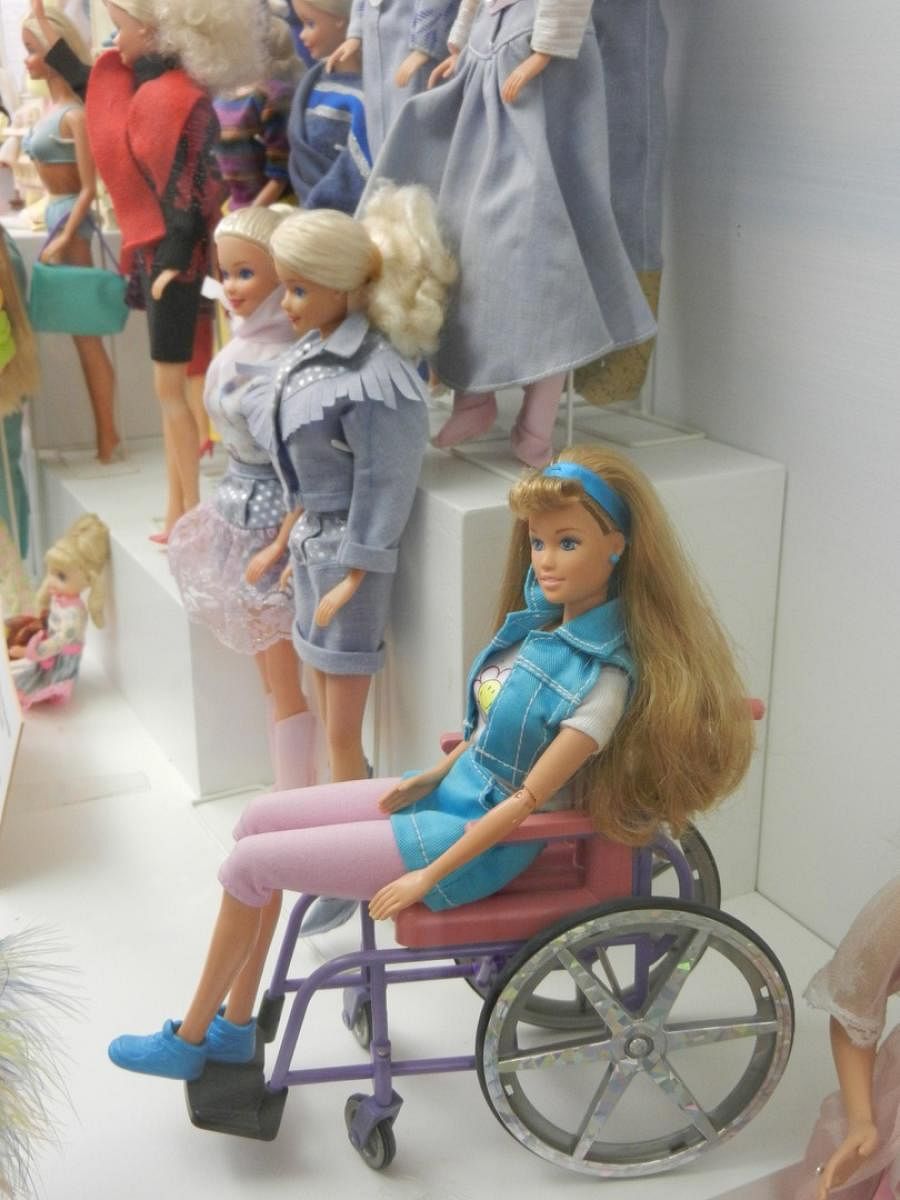
When little Avika’s father gave her a beautiful doll seated on a wheelchair, her joy knew no bounds. “I could see her eyes light up like a thousand stars,” says the emotional father who would often be pained by the “negative, discouraging reactions” his special child evoked in children her age. “Small kids would sometimes look at her inquiringly, wondering what she’s doing sitting on this chair with big wheels. Other times, when no elders were around, I knew some of them would be making fun of her.” Although such children angered him with their insensitivity, he says, “I know that children can sometimes, unwittingly and in their innocence, be cruel but the idea was to deal with it and make my child handle her condition in a positive way.”
And a toy — a doll on a wheelchair — made a difference. “My daughter’s immediate reaction was, “This doll is just like me’. It made her feel positive and even confident about herself,” adds Avika’s mother Neha.
Manju Sarma who has been physically challenged since the time she was a three-year-old — a result of an accident — remembers being a butt of ridicule among her peers. “I am talking about young children in my class who would snigger at the way I walked, despite being reprimanded by teachers.” Although her parents and siblings never let her feel she was any different, the situation was fairly different in school. “My father wanted me to go to a regular school and grow up with normal kids so that I don’t feel any different. But I was made to feel different,” she says. Manju, who is now 35, confesses to “always suffering from a complex particularly at that age, so much so that I often didn’t want to step out of the house”.
Changing attitudes
But she’s happy that in the last few years, attitudes towards disability are changing. “But we still have a long way to go and physically challenged people continue to rough it out in the real world.” What Manju rues is lack of enough education at an early age to sensitise normal children about physical and mental disability. “Children with affected siblings are sensitive and can empathise but not necessarily the others.” And she would know, despite being independent — she works in a semi-governmental organisation — Manju comes across even grown-ups who “could do with a crash course on treating differently-abled people normally”.
That is why when she came across some toys representing people of her ilk, she was thrilled. It all began in the UK in 2015, when the #ToyLikeMe campaign was established by writer and journalist Rebecca Atkinson who had noticed the lack of “positive disability in toys”. Together with some fellow parents including writer Melissa Mostyn and former Ragdoll play consultant Karen Newell whose son has a visual impairment, she called upon the global toy industry to start representing the millions of differently-abled children across the world in a more positive and effective way to make a difference. “As someone who had grown up wearing hearing aids, I remembered firsthand how it felt to be a child who never saw themselves represented by the mainstream and what that can do to a child’s self-esteem. To exclude in the toy box teaches all children it’s okay to exclude in real life too. I wanted to change this for generations to come by getting global brands to include positive representations of disability in their products,” she said.
Inducing sensitivity
A cursory Google search reveals how toymakers are designing toys with different conditions and abilities. So, among others, you have these dolls in varied colours, shapes and sizes. And yes, different abilities — there are toy-characters not just on a wheelchair or with a prosthetic limb, but also with a cochlear implant, with vitiligo and even a head with no hair.
“Although the sale of such toys may not be as much as the others, it’s still a move in the right direction,” informs Shalu Kashyap who runs a toy store. “I have seen the happiness on the faces of children when they see toys that reflect their own condition. It gives them joy and a sense of belonging in a world that sees them as ‘different’.”
More and more toy companies are starting to raise awareness about social and children’s issues through toys. Nataliya Saxena of the Arty Smarty Project that is into DIY art kits for both children and adults, says that creating toys for the differently abled is already part of her game plan. “The idea took root with a video that showed a physically challenged child being given a three-legged puppy as a pet and the bond that developed between the two. We will soon have art kits reflecting special conditions that children can colour and then create,” she informs adding that board games for visually-impaired kids will be on offer too. Counselling through toys should be a must from an early age not just for the differently-abled but even for regular kids.
Suitably representative toys help mould children’s minds in a beautiful direction, says Dr Sanjay Chugh, consultant psychiatrist. “Inducing sensitivity among all children is a must,” he asserts, adding that negative exposure makes children less sensitive towards such situations or towards differently-abled individuals. This might look like a small step but it certainly will go a long way in making our world more inclusive.